World War 2 started on September 1, 1939 with the infantrymen of the initial belligerents using the same rifles used a generation before in World War 1. The biggest difference was the use of a new generation of light machine guns – Bren guns, MG-34s etc.
The submachine gun did have an impact, and everyone wanted them. I read somewhere that half of the Soviet casualties (@ 390,000) were inflicted using the Suomi submachine gun during the Winter War of 1939-40. The Germans just could never get enough submachine guns. They had MP-28s, MP-34s, MP-38s, and then the MP-40 which was a simplified version of the MP-38.
The British did not have a submachine gun going into WW2. They bought some Thompson submachine guns. The Thompson was a good weapon but expensive (and heavy). They did copy the MP-28 (as the Lanchester) used by the Royal Navy. The Sten gun was demonstrated in January 1941 with production off the line in June 1941. It was cheap, no frills weapon that fired 9 mm ammunition, was 30 inches long, weight 6lbs, 8 ozs. About 3.5 million Sten guns were made. It had an average submachine gun range of 70 meters.

Sten gun
The U.S. would build a cheap, stamped metal submachine gun, the M-3. It had a range of 50 meters. 650,000 were made. My father in law used one in WW2. Interestingly, tankers in the U.S. Army were still using the M-3 in the First Gulf War.
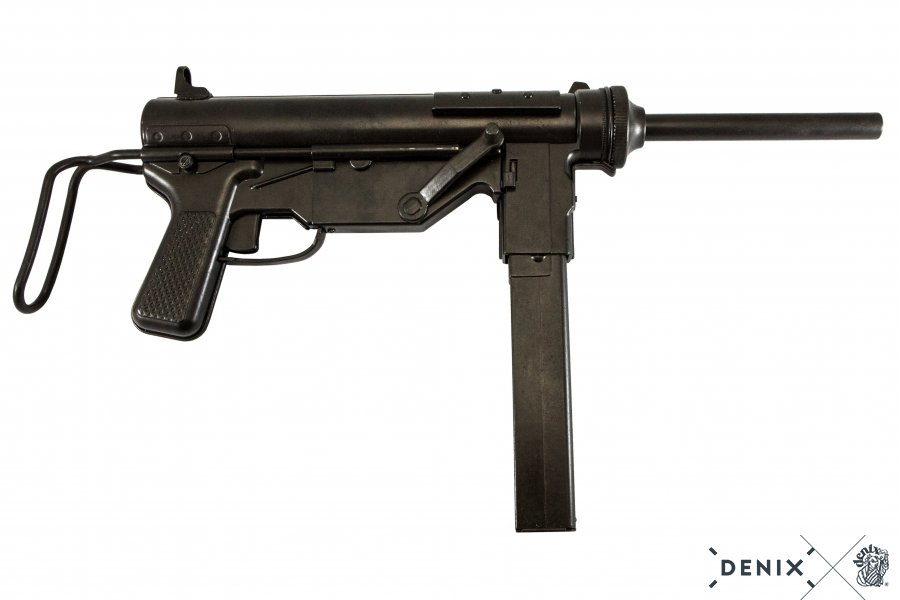
M-3 “Grease Gun”
The Japanese produced a small number of submachine guns with the Type 100. It fired the 8 mm Nambu pistol cartridge. It was based on the German MP-28. I have seen a reference to Japanese Naval Paratroopers using Swiss made MP-28s but no separate confirmation. The Japanese were obsessed with bayonets. They designed the Type 100 to take the bayonet. Why?
The Soviets took up the submachine gun with a vengeance. The PPSh-41 was a mass produced, cheap improvement on the PPD line of submachine guns. It had the 71 round drum, only fired on full automatic, and had a range of 120 meters. It fired the 7.62 pistol round. Whole units in the Red Army were armed with the PPsH-41 giving a large amount of fire power within short distances. The submachine gun is an assault weapon for close-quarter fighting. That fit in with Soviet doctrine of always being on the attack.
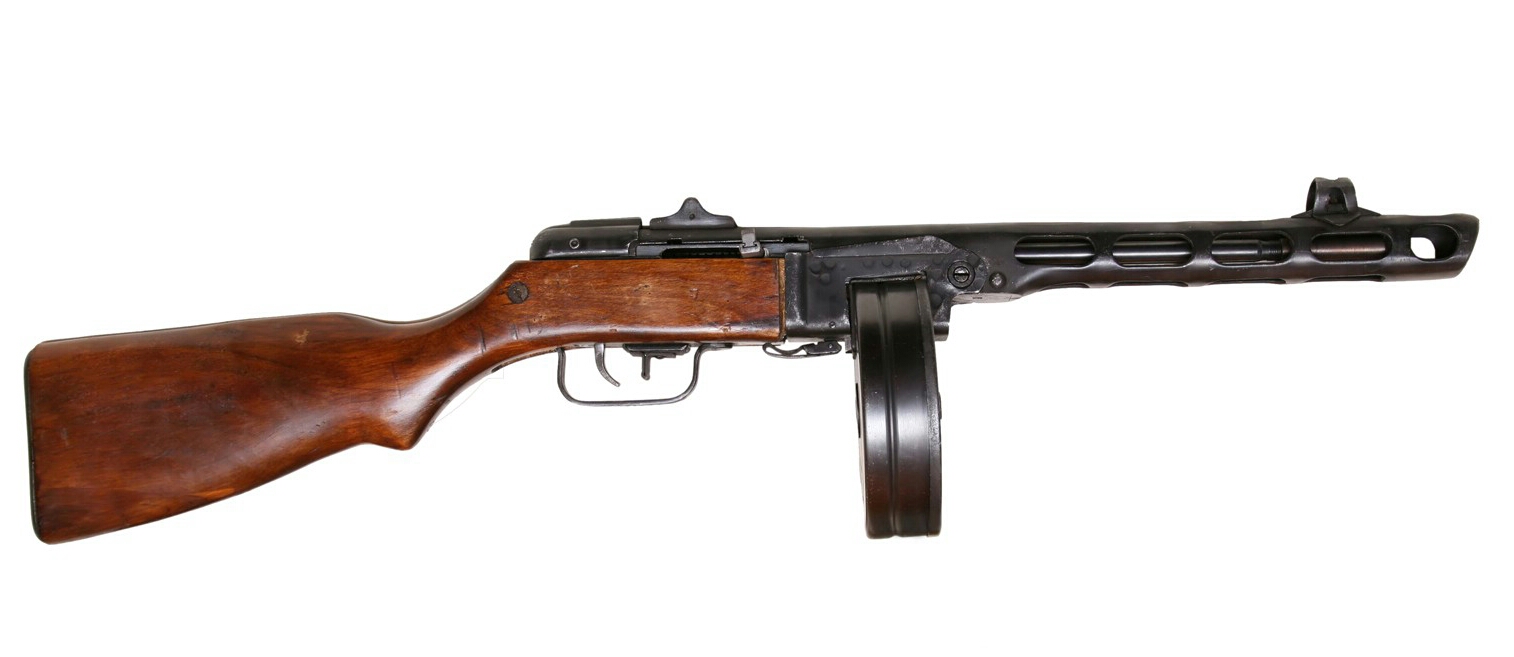
PPsH-41
The concept of rifle carbines took two distinct paths in World War 2. One was the shrink the conventional bolt action rifle. The problem is muzzle flash, loud sound, and recoil using those long, powerful rifle cartridges. The Soviets produced a carbine version of the Mosin-Nagant rifle, the M-44. It came in handy for urban warfare and appears to have been liked by the Red Army. I would imagine you would have a sore shoulder firing it after 10 or 20 rounds.
The British produced the “Jungle Carbine,” an attempt to make a small Lee-Enfield rifle for use in Burma. It did not work out well. There were problems with keeping the weapon sighted in. It was loud and had a nasty kick. It was retired after only a couple years.

Jungle Carbine
I mentioned the U.S. adopted the M-1 Garand rifle in the late 1930s. Gen. George S. Patton said it was “the greatest battle implement ever devised”. U.S. Army and Marine rifle squads had a great amount of fire power with 10 or 11 M-1 rifles, a Browning Automatic Rifle, and maybe a Thompson submachine gun or M-3 “Grease Gun.”
The Soviets were equipping their troops with a new self-loading rifle, the SVT-40. It fired the 7.62 x 54R cartridge. The rifle was not rugged and distributed to NCOs mostly. It was also used as a sniper weapon. The SVT-40 had an effective range of 500 meters as opposed to 1,000 meters for the Mosin-Nagant. Perhaps most sniping was done within 500 meters.

SVT-40
The Germans did produce two self-loading rifles, the G-41 and G-43. Both used the 7.92 Mauser cartridge. The G-41 was heavy and had problems including cleaning the gas operation. Both were used as specialist weapons and not produced in great numbers. One wonders if a Wehrmacht rifle squad had been armed with G-43’s instead of Kar 98Ks.
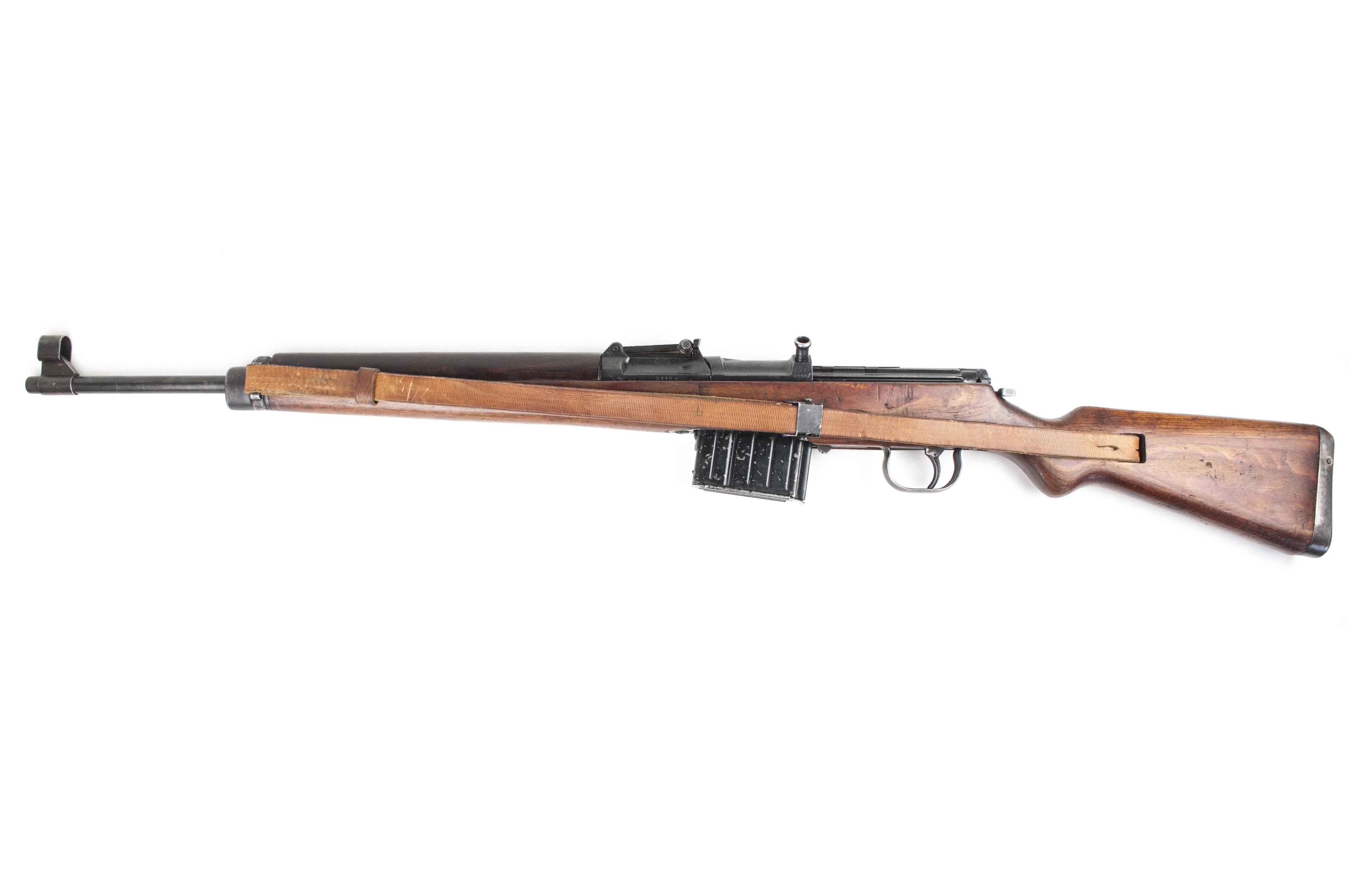
G-43
The German paratroopers were part of the Luftwaffe and not the Wehrmacht. They were in search of that most elusive weapon that would be submachine gun, light machine gun, and self-loading rifle all in one. The FG-42 is sort of like a Browning Automatic Rifle but lighter. It fired the 7.92 Mauser cartridge. It had both full-auto and single shot capability using a 20 round detachable magazine. Weight was 9 lbs, 15 ozs. It was also expensive to produce. The guess is maybe 7,000 were produced in all.
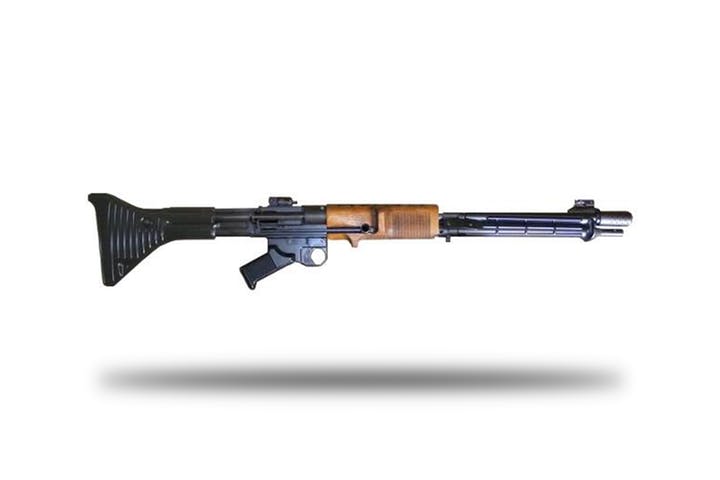
FG-42
There were some interesting innovations in WW2 with new weapons that broke through the old thinking.
First, the U.S. M-1 carbine was a real breakthrough in attitude on rifles. The U.S. Army decided as John Weeks put in World War II Small Arms “arose from a sensible realization after World War I that pistols were not particularly effective weapons of war.”
The M-1 carbine weighs 5 lbs, 7 oz, has a 15 round detachable box magazine, and uses a 7.62 x 33 mm cartridge. Finally, the stranglehold on over powered cartridges was broken. Accepted in mid-1941, the first rifles were used in Operation Torch in North Africa in November 1942. The idea was for mortar men, drivers, signal corps, etc. to use the M-1 carbine. It was hugely popular with 6 million produced. After WW2, you see the French using it in Indo-China, the British in Malaya, U.S. Special Forces in Vietnam. There are pictures of a dead Che Guevara surrounded by Bolivian troops holding M-1 carbines. Somewhere in the world today, the M-1 carbine is being used. During the Battle of the Bulge, advancing German troops were picking up and using M-1 carbines from the stacks of captured American equipment.
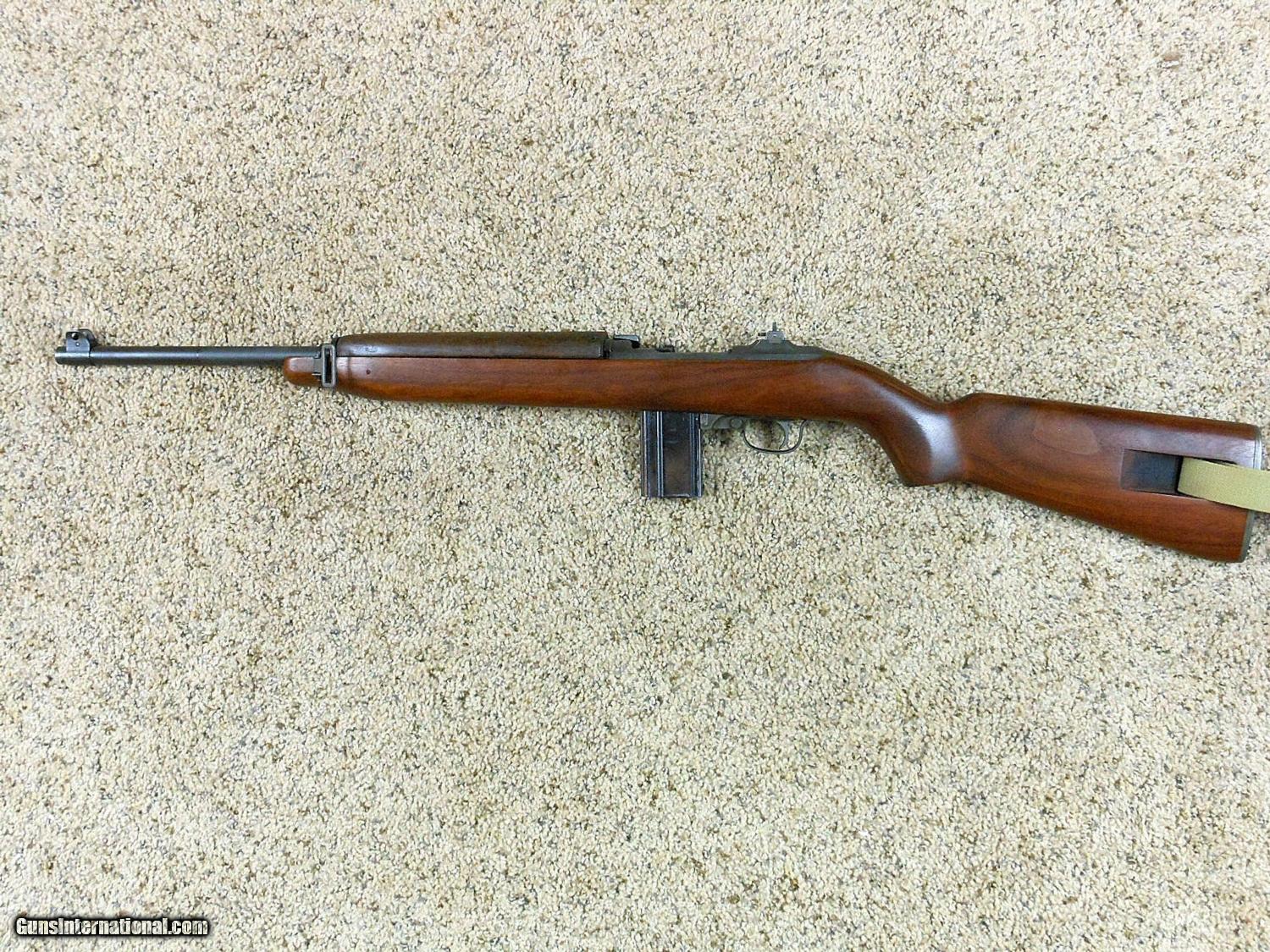
M-1 Carbine
The Germans created the future in small arms with the Sturmgewehr 44. This had select fire capability, weighed 11.24 lbs, fired a 7.92 x 33 mm cartridge, and had a 30 round detachable box magazine. You may recognize the design which obviously was used for the AK-47. Some prototypes were used in 1942 on the Russian Front. The Soviets had surrounded a German Wehrmacht division. These rifles were air dropped and the division was able to blast its way through to safety. Unfortunately for the Germans, the StG 44 came out too late. It was not distributed in any number until October 1944. Estimates are around 400,000 were produced. What is amazing is how it continued to be used by a Yugoslavian paratrooper unit until the late 1980s and a batch showed up in Syria a couple of years ago! Where is the ammunition coming from?
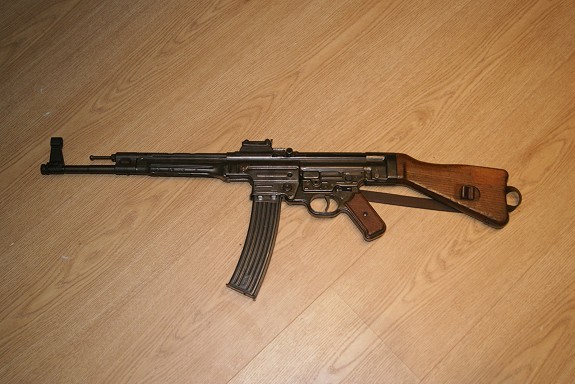
Sturmgewehr 44
There are stories that the Soviets used a prototype of the SKS rifle in the closing days of WW2 in Europe. I did some digging and that is not quite true. Simonov was working on a carbine that fired the 7.62 x 54R cartridge. This is what was used. It was found of interest to continue development to what would become the SKS a few years later.
When it comes to jungle warfare, firepower, compactness, and weight are all factors. One weapon used to a small degree was the shotgun. The Winchester Trench Gun was used in the Pacific. There are accounts of the 31st Infantry using “riot guns” in the Battle of Bataan against Japanese rifle men hidden in trees in 1942.

Winchester Trench Gun
On January 11, 1942, the Japanese attacked the U.S. Army Philippine Scout 57th Infantry Regiment on the Abucay Line on the Bataan Peninsula, Luzon Island, Philippines. The Scouts were armed with M-1 rifles, Browning Automatic Rifles, and .30 Browning light machine guns. The 2nd Battalion, 141st Infantry of the Imperial Japanese Army made a frontal assault. The attack was repulsed leaving 200-300 dead Japanese. Considering dead are generally 1/3 of total casualties, the 2nd Battalion, 141st Infantry ceased to be an effective fighting force.
It is no coincidence the U.S. Army and Marines methodically ground up Japanese garrisons on their island-hopping campaign from fall of 1942 on. At most, one third of the U.S. Army was in the Pacific due to the Europe first strategy. Despite being the secondary theater, Japan was strategically in a no-win situation by the time the war ended in Europe. Geoffrey Perrett wrote in There’s a War to be Won that by 1945, platoons were doing the job it took companies two years earlier. Companies were doing the job of battalions. This force multiplication had a profound impact. The massive firepower a U.S. Army platoon or company could amass was unequaled except by Soviet Guard units armed with the PPsH submachine guns.
There were not that many “automatic rifles” used in WW2, certainly none used by the Japanese as portrayed in Marvin Albert as “Ian MacAlister’s” Skylark Mission or Jon Cleary’s The Long Pursuit.
Morgan
To answer some of your questions
1) The Japanese military in the 30s were obsessed with the bushido code so edged weapons held a mystique for them
2) Re the Stg 44 ammo. East German stocks. They continued to produce the rifle and ammo until the late 70/80s.
Why no idea.
3) collectorgrade.com sells excellent (and expensive) reference books on the major weapons of the late 19th-21st century.
4) The Sten arose after Dunkirk when Britian had to abandoned most of their equipment there and needed super cheap weapons to thwart the probable invasion of the country. It was made to last just 2 years but anuyone with a basic tools could make them
xavier
The M1 carbine was the favorite weapon of Audie Murphy. Nothing more needs to be said.
The M-1 carbine had a good reputation coming out of WWII, not so good in recent years. Two things to remember: the carbine was designed to run ‘wet’, so use a lot of lube, and the magazines need to be pristine or as close to that as possible.